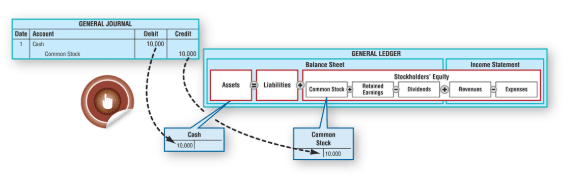
The Balance Sheet provides an end-of-year snapshot of assets, liabilities, and net assets, offering a view of financial stability and liquidity. Additionally, the form requires disclosure of governance practices, including board composition and potential conflicts of interest, which reflect the organization’s leadership and ethical standards. The Form 990-PF is required for all tax-exempt organizations that are designated as private foundations, regardless of their financial status. A nonprofit’s executive director is often responsible for completing a 990 form, though other finance and operations staff may contribute to the effort.

How to Read Form 990
Of course, you should always remember to file your 990 returns on time in order to stay compliant with the IRS. However, you can also use 990 forms to prove both your financial irreproachability and commitment to your community to your organization’s volunteers and donors (potential or otherwise). On the other hand, the gross receipts do not necessarily matter if the organization is a private foundation — that is, a tax-exempt organization created and funded by a single party (i.e. an individual or business). For nonprofit organizations, filing a Form 990 can be overwhelming and confusing, especially if it’s your first time. In this article, we will discuss everything you need to know about filing a Form 990, including six steps to take before, during, and after transmitting your form to the IRS.
Nonprofit Education

Understanding Form 990 is essential for nonprofits aiming to maintain tax-exempt status while fostering trust with stakeholders. This guide will delve into its components and clarify its impact on nonprofit operations. Completing a 990 form for your tax-exempt organization may initially seem like yet another task to pile onto your already busy staff.
Filing requirements

One reason balance sheet you may volunteer to select this option is to create a more detailed public record of your charitable nonprofit’s operations for increased donor accountability. The one you need to file depends primarily on your total gross receipts and assets. It’s essential to file the form accurately and on time to avoid penalties and maintain tax-exempt status. The Charity CFO provides expert financial guidance and streamlined and efficient accounting services to 150+ nonprofits throughout the USA. We onboard a few new clients each month, but we have limited capacity, and space fills up quickly.
- The opinions and views expressed in this article are solely those of the authors.
- In June 2007, the IRS released a revised Form 990 that requires significant disclosures on corporate governance and boards of directors.
- Others may ask a series of questions to gather the required information and complete the form.
- For example, a conflict of interest policy requires board members to disclose potential conflicts and abstain from related decisions, upholding governance integrity.
- If it’s getting close to the deadline and you don’t think you’ll have the capacity to complete your 990 form on time, you can file for a six-month extension using Form 8868.
- Understanding how Form 990 works is vital for maintaining transparency and compliance, helping you avoid potential legal issues.
Which of these do you expect will have the biggest impact on your nonprofit in 2025?
This part of the form provides a quick snapshot of the organization’s operations and financial health, making it a good starting point for understanding a nonprofit’s 990 Form. The 990-PF is filed by all 501(c)(3) private foundations and 4947(a)(1) nonexempt charitable trusts. An organization can clarify its mission on the 990 and detail its accomplishments of the previous year. And a prospective board member can see who else is already on the board and what the charity’s cash reserves look like. Of course, there may be times when you are unable to prepare and file your nonprofit’s 990 return on time.
Form 990 pop quiz!
And again, if you fail to correct this information within the IRS’s given time what does 990 mean frame, you can even incur penalties. Page 2 of the Form reports on the mission and programs of the Organization for the year. To obtain an automatic six-month extension for your 990, simply file a Form 8868, also known as the Application for Extension of Time to File an Exempt Organization Return.
If you’re a nonprofit pursuing funding through grants, 990 data will give you an edge. The Form 990 serves as an open book, revealing the financial actions, mission, and management of funders. Additionally, the IRS offers extensions if you need more time to complete your 990. Nonprofit organizations are required to make their 990 and their exemption application available for public inspection without charge at their regional and district offices during regular business hours.
- On the other hand, some organizations are exempt from filing Form 990, regardless of their income or assets.
- If you’re a nonprofit pursuing funding through grants, 990 data will give you an edge.
- This is especially helpful when it comes to receiving grants and it can also benefit your public relations.
- If gross receipts or assets are over $200,000 or $500,000, respectively, the full Form 990 must be filed.
- You should be aware that Form 990 is due on the 15th day of the fifth month after the fiscal year ends.
- By examining this section, you can gain valuable insights into the organization’s financial stability and how effectively it manages its resources.
- This way you’ll be able to avoid any penalties and also prove your legitimacy to anyone who is interested in learning more about your nonprofit.
Strong internal controls and regular audits, both internal and external, prevent fraud and ensure accurate financial reporting. Organizations with robust management practices are better positioned to build trust with donors and stakeholders, fostering increased support and funding. Effective financial and expense reporting is critical to ensuring a nonprofit’s financial integrity and transparency. Within Form 990, this reporting demonstrates accountability to donors, grantors, and regulatory bodies.
- If you stay on top of your organization’s finances and other information, this process should be easier than filing your own taxes.
- If your project is a fiscally sponsored initiative within an established nonprofit, it’s on them to file.
- There are four different 990 forms used by the IRS for nonprofits organizations.
- We onboard a few new clients each month, but we have limited capacity, and space fills up quickly.
- In this post, you will learn about the specifics of Form 990, including who needs to file and the implications of your financial reporting.
- You’ll inform potential donors about your programs–how they work and who they benefit–and how each of those programs contributes to fulfilling your mission.
Report

Organizations such as non-profits, hospitals, certain Law Firm Accounts Receivable Management political organizations, and certain religious organizations may be required to file the Form 990 depending on the size and status of the organization. Depending on the size, status, and type of organization filing the Form 990, a number of different attachments, or a different version of the Form 990 may be required. Some nonprofits qualify as supporting organizations, which assist one or more public charities. These organizations must demonstrate a close relationship with the charities they support, often through governance or operational ties. Supporting organizations are categorized into three types—Type I, Type II, and Type III—each with distinct requirements regarding control and influence over supported entities.
Leave a Reply